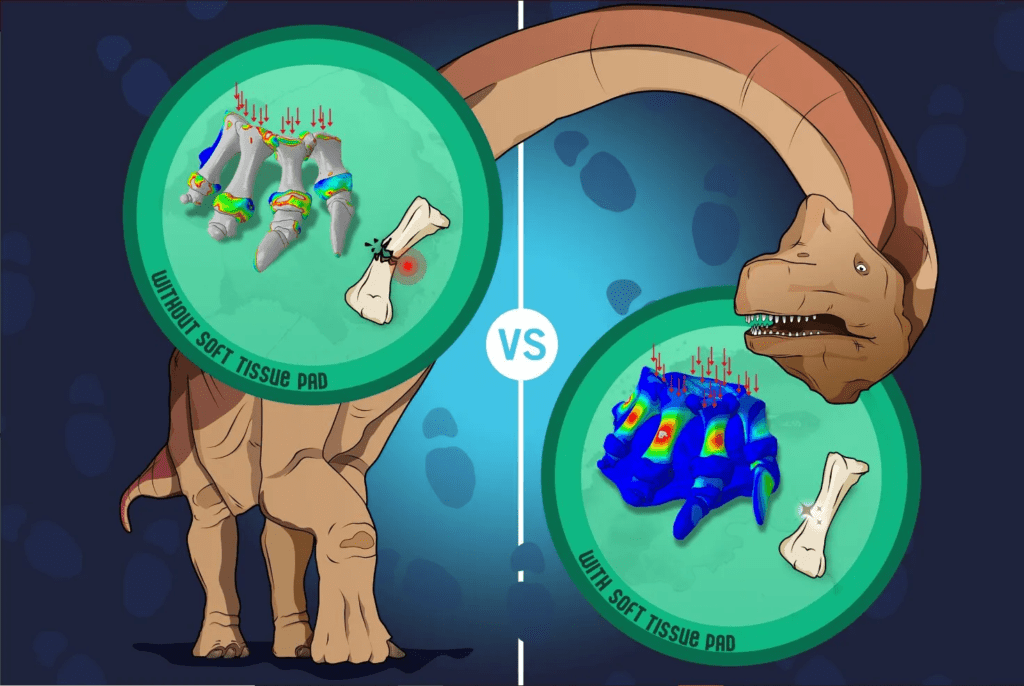Sauropods, among the most iconic groups of dinosaurs, weighed an average 50 tons, and featured extremely long necks. Researchers have now found evidence that sauropods developed soft tissue pads beneath the heel early in their evolution, cushioning the foot to absorb their weight and help them support themselves.

This group of dinosaurs, like Brontosaurus and Diplodocus, were originally believed to be semiaquatic animals that could support their size with the aid of water buoyancy. However, the discovery of sauropod tracks in terrestrial deposits in the 20th century dismissed this theory — they did just fine without the aid of water. So then how did they manage to support their enormous weight?
Most studies seeking an answer have focused on the analysis of the axial skeleton and upper and middle long bone segments, such as the skull and tail. In comparison, research on the lower limb region has been minimal, which could actually be the key to understanding sauropods’ capacity to support their massive weight on land.
“We’ve finally confirmed a long-suspected idea and provided biomechanical evidence that a soft tissue pad would have played a crucial role in reducing locomotor pressures and bone stresses,” Andreas Jannel, lead researcher, said in a statement. “It’s mind-blowing to imagine that these giant creatures could have been able to support their own weight on land.”
The evolution of sauropods
Jannel worked with researchers from Monash University and the University of Queensland and created 3D digital models for the foot skeleton of various sauropods and their precursors. They tested the strength of these models and compared how postures influenced the foot with and without the addition of a soft-tissue pad.
No matter the foot’s posture, none of the models could sustain the magnitude of mechanical forces that the dinosaurs would have encountered – unless they also had a soft-tissue pad beneath the hell. Without the pad, the researchers explained, bones in the feet of sauropod dinosaurs would have crumpled under their massive weight. So in other words, they must have had this soft tissue.
The ancestors of sauropods were in fact small, two-legged animals that would have looked very similar to the theropods and weighted a bit more than an ostrich. But around 210 million years ago, sauropod ancestors became bigger. The largest ones, like the Argentinosaurus, reached adult sizes of over 50 tons – ten times the size of an elephant.
It goes without saying that sauropods had massive feet that would have shaken the earth as they walked. Some of the sauropod footprints found in Western Australia are over 1.7 meters long, which is big enough for most people to bathe in. In fact, the name of one of the first described sauropods was Brontosaurus, which means thunder lizard.
“I’m keen to apply a similar method to an entire limb and to include additional soft tissue such as muscles, which are rarely preserved in fossils,” Jannel said in a statement. “We’re also excited to study the limbs and feet of other prehistoric animals. This should allow us to answer different questions about the biomechanics of extinct animals.”
The study was published in the journal Science Advances.









